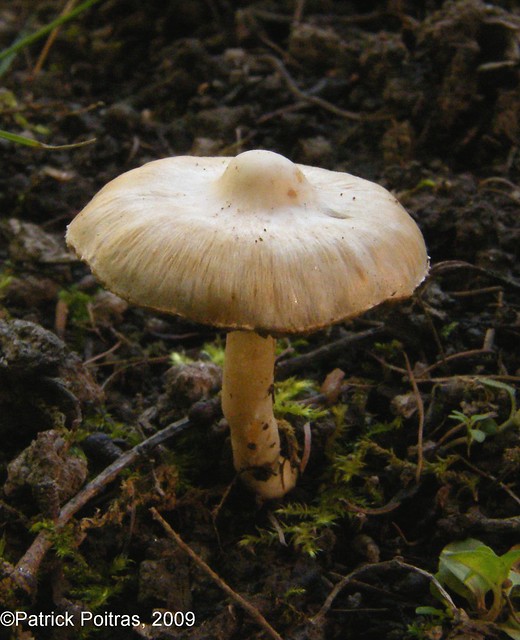 "Kill the king, yeah
"Kill the king, yeahStrike him down
Power, power it happens every day
Power, devour all along the way
Oh no, move me out of harm
I need a spell and a charm
And fly like the wind
I'm no pawn, so be gone, speed on and on
Kill the king
Treason, treason, the specter looms again
Treason, reason, the realm is safe and then
Oh no, move away from harm
I need a spell and a charm
Fly like the rainbow
I'm no pawn, so be gone, speed on and on
Kill the king
Tear him down
Kill the king, yeah
Got to take his crown
Crown
Kill the king
He'll rule no more
Strike him dead
The people roar"
From Rainbow's Kill the King (yes, Ritchie Blackmore and Ronnie James Dio)
I’ve now had time to view “The Purple Wedding” episode of Game of Thrones and I thought I‘d throw in my one and a half cents regarding the ever-hated King Joffrey’s death. So, what killed Joffrey? There have been some very good pieces around the web discussing the matter. On Boing Boing, Rachel Nuwer mentioned cyanide as a possibility. So did Deborah Blum (by the way, read The Poisoner’s Handbook if you haven’t yet, it’s great). Dr. Raychelle Burks has pointed towards strychnine. The Nature’s Poisons blog has implicated nicotine.
So, what do I think?
All of the above are great thoughts. And of course, we are
talking about a fictional series of books on which the television series is
based, so there is pretty much no right answer here, so let’s speculate. I love that word. I don't get to speculate much in the normal work hours.
I think Nature’s Poisons is definitely on the right track in
his assessment of the poisoning. We should be looking at something that affects
the parasympathetic nervous system (PSNS). Primarily, we should be looking at
some drug that activates the PSNS, i.e. a receptor agonist of some sort. The
PSNS’s main neurotransmitter is acetylcholine (but it’s not the only one).
Acetylcholine acts on two basic receptors, muscarinic acetylcholine receptors
(mAChRs) and nicotinic acetylcholine receptors (nAChRs). Nature’s poisons
focuses on nicotine as the culprit and its agonist behavior at the nAChRs. So,
let’s focus on the mAChRs.
The different types of mAChRs are located in various parts of the body including the heart, blood
vessels, smooth muscles, liver, lungs, salivary glands, sweat glands, bladder,
and brain. As with the nAChRs, the acronym SLUDGEM is in
play.
Salivation stimulation
Lacrimal stimulation
Urination
Defecation
Gastrointestinal upset
Emesis
Miosis
Other adverse effects include:
Bronchial secretions
Bronchioconstriction
Constriction of the pharynx
Bradycardia
Hypotension
Hypothermia
Vasodilation
Tremors
Convulsions
Well, know that we know possible adverse effects, what drugs affect mAChRs? There are a few, but what "plant"-based drugs are known to be mAChRs agonists? Afterall, in the novel, "The Strangler" is plant-derived and is made from the "leaves".
Let’s entertain mushrooms for a few
moments. While not necessarily a "plant" (Kingdom Plantae), fungi were historically classified as plants until not long ago (or so I'd like to think as the Fungi kingdom is as old as I am) and may still be mistakenly classified as so. We aren't referring to psychoactive mushrooms of the Psilocybe kind, also known as magic mushrooms or ‘shrooms.
I’m referring to poisonous mushrooms. Mushrooms that are potentially deadly. Some
species of fungi (Clitocybes or Inocybes) contain an alkaloid called muscarine.
Pharmacologically, muscarine functions as an agonist of the mChRs.
With medical intervention (use of atropine as an antidote), death from
muscarine mushroom intoxication is extremely rare. Without intervention, death
may occur, but it is still relatively rare. Of course, as we like to say in forensic toxicology, the
dose makes the poison. But in Westeros, anything is possible. In a suitable dosage, muscarine could do the job.
Now, let us consider the possible use of pilocarpine, the alkaloid found in the genus Pilocarpus. A common name for many species of this genus is Jaborandi. These shrubs/plants can be found growing in South America. Similar to muscarine, pilocarpine is a mAChR agonist. It is considered an essential medicine according to the World Health Organization and is commonly used to treat glaucoma and xerostoma (dry mouth) and in the process of diagnosing cystic fibrosis. But as an agonist at mAChR, the same adverse effects presented above are possible.
Acute poisonings with pilocarpine have occurred, but with medical intervention (atropine again!), the patients survived and recovered. Deaths have occured as well. Again, in the appropriate dosages, pilocarpine can cause death.
Now, let us consider the possible use of pilocarpine, the alkaloid found in the genus Pilocarpus. A common name for many species of this genus is Jaborandi. These shrubs/plants can be found growing in South America. Similar to muscarine, pilocarpine is a mAChR agonist. It is considered an essential medicine according to the World Health Organization and is commonly used to treat glaucoma and xerostoma (dry mouth) and in the process of diagnosing cystic fibrosis. But as an agonist at mAChR, the same adverse effects presented above are possible.
Acute poisonings with pilocarpine have occurred, but with medical intervention (atropine again!), the patients survived and recovered. Deaths have occured as well. Again, in the appropriate dosages, pilocarpine can cause death.
Let’s recall the death scene from the television show.
Joffrey drinks wine and eats pie.
Joffrey mentions that the pie is dry and needs a drink.
Joffrey mentions that the pie is dry and needs a drink.
Joffrey begins to cough and acts as if he is choking and gasps for air.
Possible bronchioconstriction or constriction of pharynx leading to dyspnea
Joffrey falls to the ground and vomits.
Possible increased
salivation and eventual emesis
Joffrey exhibits some shakiness.
Maybe some small tremors.
Joffrey’s pupils are constricted
Miosis is present.
Joffrey still cannot breathe and his face is blue colored.
Asphyxia leading
to acute cyanosis.
The symptoms of muscarine or pilocarpine intoxication and the observed effects during
the death scene line up pretty well.
Cyanide, strychnine, nicotine, and now muscarine and pilocarpine. What do you think?
What lead to King Joffrey’s death?
References
Ishii, M. and Kurachi Y. (2006) Muscarinic acetylcholine receptors. Curr Pharm Des. 12: 3573-3581.
Flomenbaum, N.E., Goldfrank, L.R., Hoffman, R.S. et al. (2006) Goldfrank's Toxicologic Emergencies, 8th Edition. Chapter 113: Mushrooms. 1564-1576
Lurie, Y., Wasser S.P., Taha M. et al. (2009) Mushroom poisoning from species of genus Inocybe (fiber head mushroom): a case series with exact species identification. Clin Toxicol (Phila). 47: 562-565.
Baselt, R.C. (2011) Disposition of Toxic Drugs and Chemicals in Man, 9th Edition. Biomedical Publications. Seal Beach, CA.
Flomenbaum, N.E., Goldfrank, L.R., Hoffman, R.S. et al. (2006) Goldfrank's Toxicologic Emergencies, 8th Edition. Chapter 114: Plants. 1577-1602.
Image of King Joffrey from HBO's Game of Thrones television series can be found via ABC News here.
Image of of Inocybe geophylla mushroom by Patrick Poitras (2009) can be found here.
Image of Pilocarpus can be found here at HealthyHomeGardening.com.
References
Ishii, M. and Kurachi Y. (2006) Muscarinic acetylcholine receptors. Curr Pharm Des. 12: 3573-3581.
Flomenbaum, N.E., Goldfrank, L.R., Hoffman, R.S. et al. (2006) Goldfrank's Toxicologic Emergencies, 8th Edition. Chapter 113: Mushrooms. 1564-1576
Lurie, Y., Wasser S.P., Taha M. et al. (2009) Mushroom poisoning from species of genus Inocybe (fiber head mushroom): a case series with exact species identification. Clin Toxicol (Phila). 47: 562-565.
Baselt, R.C. (2011) Disposition of Toxic Drugs and Chemicals in Man, 9th Edition. Biomedical Publications. Seal Beach, CA.
Flomenbaum, N.E., Goldfrank, L.R., Hoffman, R.S. et al. (2006) Goldfrank's Toxicologic Emergencies, 8th Edition. Chapter 114: Plants. 1577-1602.
Image of King Joffrey from HBO's Game of Thrones television series can be found via ABC News here.
Image of of Inocybe geophylla mushroom by Patrick Poitras (2009) can be found here.
Image of Pilocarpus can be found here at HealthyHomeGardening.com.




No comments:
Post a Comment